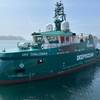LNG Infrastructure Needs More Money: DNV GL
The vast majority (85%) of professionals working in the liquefied natural gas (LNG) sector believe that more investment is needed in LNG infrastructure to satisfy forecasts for growing global demand after 2025.
However, more than two-thirds (69%) stated that uncertainty over prices is limiting spending in the megaprojects needed to feed the world’s growing appetite for LNG.
A new report published by DNV GL has revealed that the vast majority (85%) of LNG professionals believe several new infrastructure projects will need to be initiated in 2019 to ensure LNG supply can meet demand post-2025. Price uncertainty is limiting investment in LNG megaprojects, according to 69% of professionals, it said.
More than a third (36%) feel financing new facilities will have the greatest infrastructure impact on the LNG market this year.
More flexible approaches to LNG production and trading are emerging: 59% expect smaller-scale LNG production to be favoured over large production units, and 55% expect operators to outsource or lease critical field development assets in 2019, said the report.
According to DNV GL’s new report: The LNG era takes shape, oil-indexed LNG pricing is part of the issue. Recent oil price swings have made LNG sellers reluctant to peg decades-long contracts to volatile crude markets, yet they still need long-term commitments to make infrastructure investments viable. Half (49%) of the LNG professionals questioned expect contracted LNG prices to continue to be linked to the oil price, while a significant proportion (30%) disagree.
Respondents expect the US (36%) and Australia (16%) to experience the greatest growth in LNG exports over the next three years. Other nations, such as Canada, Russia, and Africa are also making moves for a slice of the LNG action. However, conventional gas from the Middle East and North Africa, as well as North American unconventional gas, will account for 70% of LNG liquefaction capacity by mid-century, according to DNV GL’s 2018 Energy Transition Outlook.
Nearly three quarters (72%) believe LNG buyers need more flexible LNG contracts. DNV GL forecasts global LNG production will increase from 250 million tonnes per year (mt/yr) in 2016 to around 630 mt/yr by 2050.













